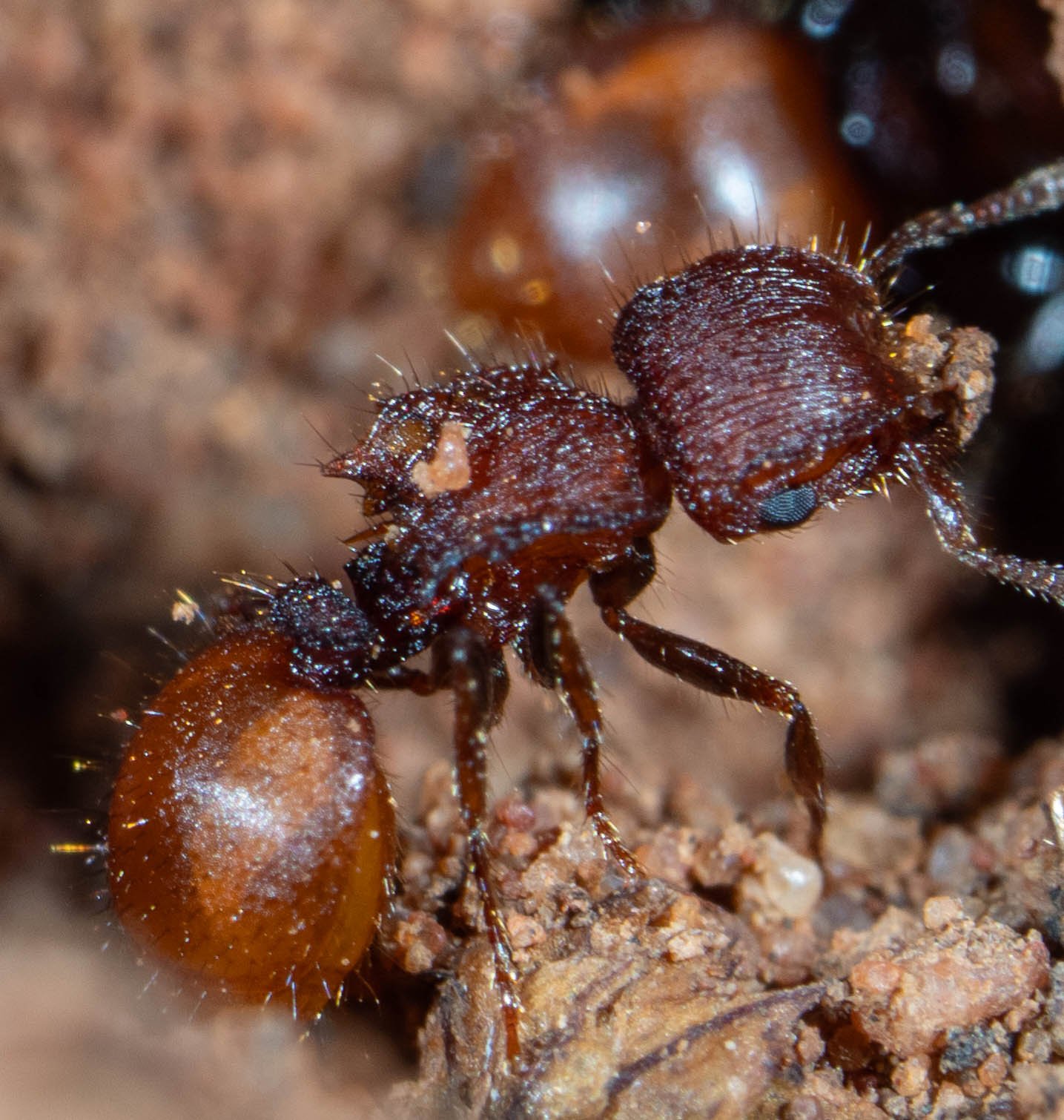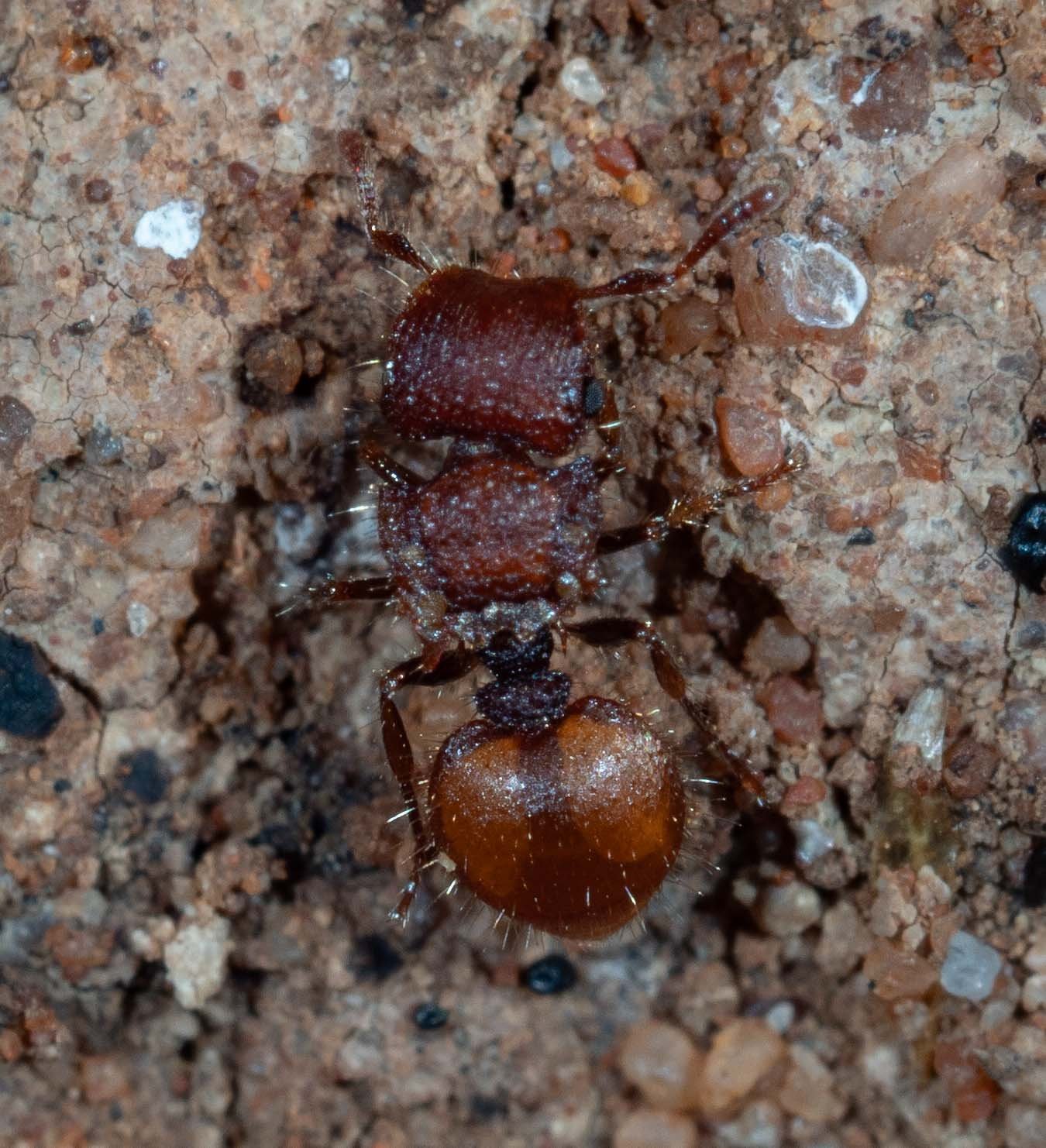
Rarely present in large numbers, these slow-moving ants are small and remarkably cryptic. When disturbed they 'play dead', curling into a ball with their antennae tucked away into grooves on their head. Soil caught in the hairs of their body provides further camouflage.

I'm sure I would have overlooked these little ants if Louise hadn't pointed them out to me. Their unusual appearance and behaviour had caught her attention some time ago, and she was curious to know more about them.
I was totally unfamiliar with them. Indeed, they tend to be uncommon in forests of the cool temperate zone (ref. 7). We have certainly never seen them in our home patch of SE NSW.

The broad plate covering much of the thorax lends the group their common name of 'shield ants'. It typically overhangs laterally and posteriorly, with various spines and translucent plates, depending upon the particular species.

Meranoplus nest underground in small colonies of around 150 workers. A colony usually has a single queen, but some small colonies may be queenless ... probably satellite nests arising from a 'queenright' colony, which may be many metres away (ref. 6)

Most shield ants are generalist omnivores, foraging on the ground and opportunistically taking seeds (ref. 7).





